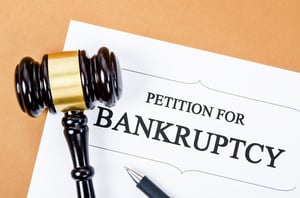Filing Taxes After Bankruptcy in St. Paul, Minnesota
After a debtor files for bankruptcy, the automatic stay immediately goes into effect; the IRS will be stopped from any collection efforts on a debtor’s tax debt. In order for a debtor to qualify for a bankruptcy discharge, the debtor must have filed tax returns at least two years prior to the filing of their bankruptcy case. The debtor also must have income tax debt that is at least three years old, and the debtor’s tax debt must have been assessed by the IRS 240 or more days before the debtor’s bankruptcy case was filed. Whether or not a debtor’s tax debt is discharged through their bankruptcy depends on when the tax debt was incurred.
Tax debt that was incurred at least three years prior to the filing of the debtor’s bankruptcy case may be included as dischargeable debt in a debtor’s Chapter 7 or Chapter 13 bankruptcy. If a debtor has priority tax debt, which is tax debt owed within the previous three years before filing for bankruptcy, that priority tax debt may not be discharged in a Chapter 7 bankruptcy, but can be paid through a monthly repayment plan in a Chapter 13 bankruptcy. In the state of Minnesota, if a debtor has a legal interest in a piece of property as homestead, and the debtor is expecting to receive a tax refund, the debtor may decide that it is better to wait for the tax refund before filing for bankruptcy. This is because it is possible that if a debtor files for bankruptcy before receiving an anticipated tax refund, the debtor may have to turn over the refund to the trustee, who will then use that refund to pay the debtor’s creditors. After receiving a bankruptcy discharge, a debtor may receive Form 1099-C: Cancellation of Debt from a creditor. Debts that are discharged in a debtor’s bankruptcy are not considered income. Therefore, a debtor will need to file Form 982 with their taxes in order to ensure that the IRS has notice of the dischargeability of the debtor’s debt in the bankruptcy. If a debtor has filed a Chapter 7 bankruptcy, the debtor may potentially have to turn over the following year’s tax refund. However, the debtor may keep a portion of the tax refund that comes from income earned after filing for bankruptcy. Consulting with a bankruptcy attorney will allow a debtor to understand with greater clarity what portion of their tax refund will be allowed to be kept. If a debtor filed a Chapter 13 bankruptcy, the trustee may receive the debtor’s tax refund each year of the debtor’s repayment plan. If the debtor is an individual tax filer, the debtor is allowed to keep $1,200 from their tax refund while in a Chapter 13 bankruptcy. On top of that, if any portion of the debtor’s tax refund comes from the federal earned income credit, or the Minnesota working family credit, the debtor will also be able to keep that portion of the refund. Any other portion of the tax refund, will need to be turned over to the trustee as an additional payment to creditors.
CALL NOW FOR A FREE STRATEGY SESSION FROM A MN BANKRUPTCY LAWYER AT LIFEBACK LAW FIRM
To receive guidance on how to file taxes after filing for bankruptcy, come see us at our new location in St. Paul, Minnesota, or at our website at LifeBackLaw.com!






